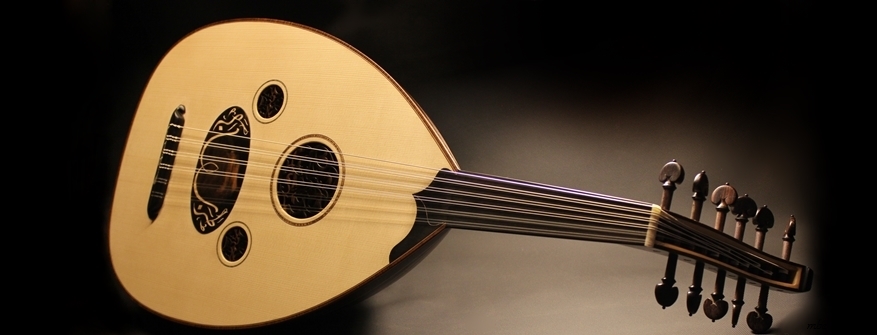From beginners to master classes, I teach for all levels.
Oud
Oud (name is originally Arabic) seems to find its roots in the Akkadian era. Some believe it originated in the Caucasus region, other sources report more western regions as a point of origin. Some findings show an early elliptical design of Oud found in the ruins of Shush, Iran, stretching its history to some five thousand years ago. Some experts theorize that a priest is shown to be playing the instrument in that depiction.
Barbat is the Iranian/Persian name for the same instrument and it’s the name that can be found in pre-islamic texts, referring to the most prominent musical instrument of the Sassanid era.
Some say that the word Barbat consists of two parts: Bar + bat: Meaning “in likeness of a duck”.
Others theorize the name is a variation of Barbod, player of ancient Barbat (Roud) in the court of Khosrow Parviz, the most recognized Sassanid king for his appreciation of music and musicians.
What we know for certain is that after Islam flourished through this part of the world, the more or less unified or at least connected Islamic territory had Oud as the name of the instrument, and it was considered the most prominent musical instrument both in theory and practice of music.
Oud as now we see in the world, comes in different sizes. Arabic Ouds have bigger b odies, Turkish ones are mostly smaller, and Persian Ouds usually fall in between. Oud’s warm and fluid sound makes it a versatile instrument in solo performances and in showcasing the nuances of Persian music. Oud is low-pitched in nature, and the traditional 10-string Oud has a limited range of two octaves, therefore the player has to master the intricacy to showcase its delicate beauty.
The Oud consists of a large pear-shaped body (or soundbox) attached to a short neck. The front (or face) of the Oud's body is flat and contains one or more sound-holes, whereas the back is bowl-shaped and constructed from around twenty thin strips of wood known as 'ribs'. Traditionally, strings are attached to a bridge on the face of the Oud (similar to a guitar) and pass over a nut at the other end of the instrument. There can also be a floating bridge instead that provides the opportunity to move it a bit and get a different sound of the same instrument. Tuning is achieved by turning a series of pegs contained in a pegbox, which is set almost at a right angle to the neck of the Oud. Notes other than open strings are produced by stopping the strings at certain points on the front of the neck; this is called “fingering” - so, the area is also known as the fingerboard.

Online Lessons
I have been teaching oud to people professionally since 1993. I teach to all skill levels, from basics for beginners to master classes for experts. My repertoire includes music Turkey, Egypt, Jordan, Iraq, Syria, and western music. Join my classes today!